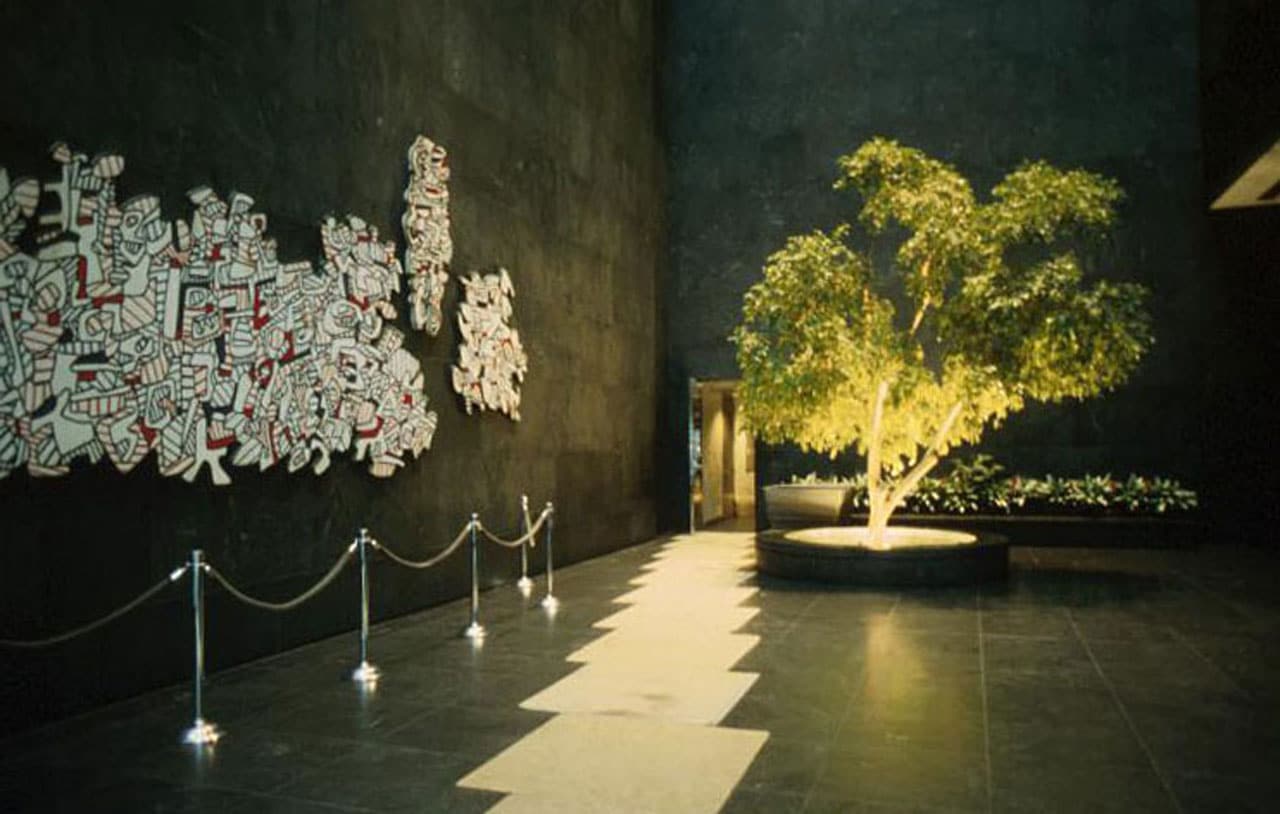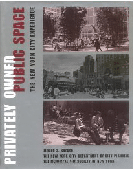
499 Park Avenue
Located inside 499 Park Avenue at the southeast corner of Park Avenue and East 59th Street, this elegant, minimalist atrium, legally known by the inelegant, non-minimalist glass-enclosed urban plaza equivalent, encourages a brief stop for momentary contemplation or psychological refuge. The atrium rises to a glass skylight four stories above. A first-floor bank office is cloaked with black opaque windows originally intended to be transparent. The upper floor windows are transparent, with interior offices visible. The floor and lower wall are clad in “Jet Mist,” a white-swirled black granite quarried in Culpeper, Virginia, cut and honed in Georgia.
Monopolizing the center of the space is one of the largest indoor ficus trees in the city, almost two stories in height. Lit by several batteries of portable and recessed lights, the tree looks surreal, as if an object of ceremonial worship. According to the concierge, the tree, or at least its predecessor, was bred under a rattan, out of direct sunlight, to equip it for a life spent indoors. A substantial attraction on the east wall is the Jean Dubuffet artwork, completed at his studio outside Paris in 1971 and bought specifically for the atrium. Designed to hang next to one another, as parts of a deconstructed triptych, are Le Deployment Paralogique (Paralogical (or Illogical) Unfolding), Le Taciturnienne (Taciturn One), and Poule Volante (Flying Hen). Dubuffet’s highly recognizable imagery, painted in reds, blues, and black stripes on white fiberglass and canvas on fiberglass, cleverly tweaks the minimalist ambiance. Perhaps because seating is confined to a rectangular granite bench hugging the south wall and the tree’s planter ledge, the atrium is rarely crowded. Given the cluster of large indoor spaces, some with high decibel levels, in the general vicinity, the space’s quiet demeanor is worth preserving if only for neighborhood public space diversity.
The atrium may be reached via a through block arcade equivalent entered from the east side of Park Avenue south of East 59th Street, or by the sidewalk widening equivalent and open urban plaza equivalent from the south side of East 59th east of Park. How did these spaces obtain such ponderous names? The Board of Standards and Appeals granted a variance permitting the developer to construct extra floor area and requiring the provision of these spaces. Since they were legally required as part of a BSA variance action rather than a City Planning Commission special permit or certification action, they did not have to meet zoning’s definition of a through block arcade, an urban plaza, or a sidewalk widening. On the BSA-approved plans, they are thus labeled “equivalents” by the owner and architect.

